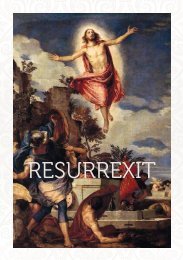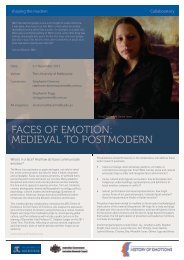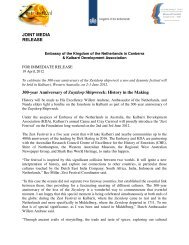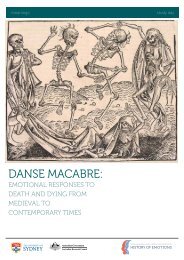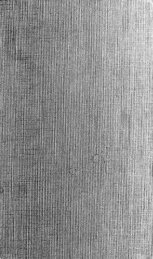Download our K-12 education pack - ARC Centre of Excellence for ...
Download our K-12 education pack - ARC Centre of Excellence for ...
Download our K-12 education pack - ARC Centre of Excellence for ...
You also want an ePaper? Increase the reach of your titles
YUMPU automatically turns print PDFs into web optimized ePapers that Google loves.
stories <strong>for</strong> teachers & students 2013<br />
The Exotic World<br />
Supporting Res<strong>our</strong>ces<br />
Dutch Lives in the World<br />
stories by winthrop pr<strong>of</strong>essor susan broomhall<br />
If the VOC seemed resolutely practical in its pr<strong>of</strong>it-making<br />
mission, many who travelled the world wrote with a sense <strong>of</strong><br />
wonder about its many marvels. Travel accounts made popular<br />
reading <strong>for</strong> Europeans at home, stimulating their imagination<br />
about the exotic.<br />
Australia, <strong>for</strong> example, had long been known as the great<br />
Southland, a land fabled since classical times to be replete<br />
with gold and peopled with giants. For all their practicality, the<br />
directors <strong>of</strong> the VOC held a glimmer <strong>of</strong> hope that such tales<br />
might be true. Their instructions to captains charting the<br />
west coast or searching <strong>for</strong> survivors also required their crews<br />
to look out <strong>for</strong> gold. Some captains obliged, writing back<br />
optimistically <strong>of</strong> their hopes. Supercargo Jacob Dedel wrote<br />
to the Managers <strong>of</strong> the VOC <strong>of</strong> what he had seen from the<br />
Amsterdam in 1619: ‘a red, muddy coast, which according<br />
to the surmises <strong>of</strong> some <strong>of</strong> us might not unlikely prove to be<br />
gold-bearing, a point which may be cleared up in time.’<br />
However, many returned to Batavia pr<strong>of</strong>oundly disappointed<br />
by the unfamiliar and seemingly barren landscape.<br />
feature in banketje (little banquet) still life paintings. It was very<br />
fashionable to collect exotic objects and <strong>for</strong> wealthy people to set<br />
up special cabinets full <strong>of</strong> wonders or curiosities from around<br />
the globe. On many occasions they did not understand the deep<br />
significance <strong>of</strong> some <strong>of</strong> these objects <strong>for</strong> local peoples and some<br />
<strong>of</strong> these objects have now ended up on public display in<br />
museums and other settings in ways that their makers find<br />
inappropriate, <strong>of</strong>fensive or simply wrong. This has led to<br />
discussions about returning some objects and certainly to<br />
creating better in<strong>for</strong>med displays about objects and their original<br />
meanings. But in the seventeenth century, the Dutch marvelled<br />
at these weird and wonderful things as they travelled the world,<br />
to take back to show their friends and families, much as we<br />
would with souvenirs today.<br />
As to the giants, Aucke Pieterszoon Jonck on the Emeloordt<br />
in 1658 noted the presence <strong>of</strong> ‘five persons <strong>of</strong> tall stature<br />
and imposing appearance’. When Willem de Vlamingh landed<br />
closer to Perth in his 1696-7 mission in the Geelvinck, his crew<br />
brought news <strong>of</strong> a little hut and eighteen-inch footsteps they<br />
had found. Vlamingh was sceptical. When in the morning they<br />
reached the little hut, they found ‘the eighteen inch footsteps<br />
changed into ordinary ones.’ The great Southland was full <strong>of</strong><br />
imaginative possibilities. Other observations were almost too<br />
bizarre to be believed. Vlamingh was equally reticent to give<br />
much credence to his crew’s sighting <strong>of</strong> a red serpent and a<br />
yellow dog amusing itself at the seashore: ‘What truth there was<br />
in these statements, I do not know. At all events I did not see<br />
either <strong>of</strong> these things myself.’<br />
François Pelsaert, aboard the Batavia in 1629, also recorded<br />
‘large numbers <strong>of</strong> a species <strong>of</strong> cats, which are very strange<br />
creatures’ that seemed scarcely imaginable: this animal,<br />
the size <strong>of</strong> a hare, had the head <strong>of</strong> a civet cat, the <strong>for</strong>epaws<br />
and tail like a monkey, ate in the manner <strong>of</strong> squirrels and<br />
carried its young in a pouch – ‘exceedingly strange and highly<br />
worth observing’.<br />
Of c<strong>our</strong>se, curiosity held practical motivations too. Instructions<br />
<strong>for</strong> captains requested that they observe carefully the nature <strong>of</strong><br />
inhabitants, what they wore, how they administered themelves,<br />
their industries, housing, village layouts as well as their produce.<br />
They should endeav<strong>our</strong> to ‘get hold’ <strong>of</strong> someone who would join<br />
their ship and teach them local customs and languages, but only<br />
if they came freely. The Dutch merchants needed to understand<br />
a people to know their desires and passions – what might they<br />
want and what would they be willing to trade <strong>for</strong> it As such<br />
contact was in Dutch interests, captains were ordered to proceed<br />
in friendship, and to watch that they and their crews overlooked<br />
cultural misunderstandings and behaved with respect towards<br />
peoples they met. Abel Tasman was specifically directed in his<br />
1644 expedition not to insult their houses, gardens, ships,<br />
possession or the women.<br />
Image/ Nicolaes van Gelder; Still life with a basket <strong>of</strong> peaches, grapes and plums.<br />
In front, white grapes on a metal plate, at left a Roemer filled with roses, to the right<br />
a Chinese jug, a pewter salt cellar, some fruit and a glass bottle. Behind the basket,<br />
a splendid golden cup and a box containing a lobster, lemons, a bowl <strong>of</strong> berries<br />
and a Berkemeyer, all on a marble surface covered with a Smyrna rug. 1664.<br />
Copyright Rijksmuseum SK-A-1536.<br />
The Dutch were very excited about the new products that they<br />
found when they explored the wider world and many <strong>of</strong> them,<br />
like exotic fruits, lobster and Chinese porcelain serving dishes,<br />
FAR FROM HOME: ADVENTURES, TREKS, EXILES & MIGRATION<br />
57





